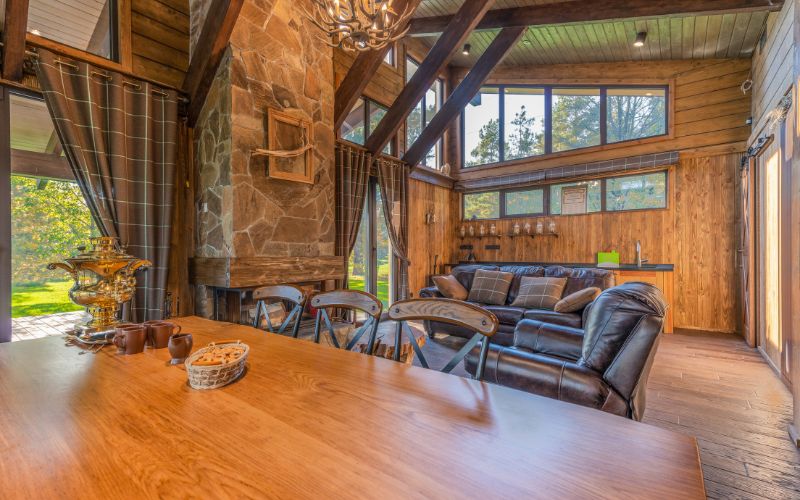In design, concepts serve as the foundation for turning ideas into reality. A design concept is a fundamental framework that outlines the vision, purpose, and aesthetics of a product, space, or experience. It encapsulates the core elements and principles that guide the design process, ensuring coherence and alignment with the intended objectives. Design concepts are essential because they provide a roadmap for designers, helping them communicate their ideas effectively and enabling stakeholders to visualize and comprehend the result.
This blog post aims to provide a comprehensive view of the process involved in transforming ideas into reality within the design field. It will delve into the power of ideas, explore idea-generation techniques, discuss the steps of concept development, highlight the significance of testing and refining, examine the transition from concept to final design, and address post-production considerations. By following this journey, aspiring designers can gain valuable insights into the intricacies of crafting design concepts and bringing them to fruition.
Understanding the Power of Ideas
The Creative Mind: A Brief Look at Creativity
Creativity is the wellspring from which innovative ideas originate. It is the ability to think imaginatively, transcend traditional boundaries, and devise unique solutions. The creative mind embraces curiosity, open-mindedness, and the courage to challenge conventions. It thrives on inspiration and seeks connections between seemingly unrelated concepts. Designers harness the power of their creative minds to generate ideas that push the boundaries of what is possible, resulting in groundbreaking design concepts.
The Potency of Ideas: From Inception to Actualization
Ideas possess tremendous potential to shape the world around us. They start as intangible sparks within the mind, fueling inspiration and curiosity. However, for a vision to become a reality, it must be transformed into a tangible concept that can be visualized, communicated, and executed. The journey from idea to actualization involves various stages, including idea generation, concept development, testing and refining, and finally, the transition from paper to reality. Each step requires careful consideration and expertise to transform the initial idea into a concrete, impactful design concept.
Idea Generation Techniques
Brainstorming: The Power of Group Ideation
Brainstorming is a collaborative technique that harnesses the collective creativity of a group. It involves generating a multitude of ideas in a non-judgmental and open environment. Through lively discussions and the free flow of thoughts, participants build upon each other’s ideas, sparking new insights and possibilities. Brainstorming sessions foster a sense of synergy, often resulting in unexpected and innovative design concepts. By incorporating the principles of brainstorming, designers can tap into a vast pool of ideas and perspectives, expanding the creative potential of their concepts.
Mind-Mapping: Visualizing the Idea Landscape
Mind mapping is a visual technique that helps designers organize and explore the relationships between ideas. It involves creating a graphical representation of concepts and connecting various elements in a structured manner. By visually mapping out the idea landscape, designers gain a comprehensive overview of the concept, identify potential gaps or connections, and stimulate further ideation. Mind mapping facilitates the exploration of different avenues, enabling designers to refine their ideas and identify the most promising directions for concept development.
Reverse Engineering: Examining Existing Designs to Inspire New Ideas
Reverse engineering involves deconstructing and analyzing existing designs to uncover underlying principles and mechanisms. By dissecting successful designs, designers can gain valuable insights and inspiration for their concepts. They can identify innovative features, understand the thought process behind design decisions, and adapt or build upon existing ideas to create something novel. Reverse engineering encourages designers to think critically and learn from the achievements of others, propelling them toward creating unique and refined design concepts.
The Value of Cross-Industry Inspiration
Cross-industry inspiration involves drawing ideas and insights from diverse fields and applying them to design concepts. By exploring unrelated industries, designers can discover fresh perspectives, innovative technologies, and alternative approaches to problem-solving. The transfer of knowledge between domains enriches the design process and encourages the creation of genuinely transformative concepts. By embracing cross-industry inspiration, designers can challenge conventional boundaries, infuse their work with interdisciplinary elements, and create design concepts that push the envelope of innovation.
Transforming Ideas into Concrete Concepts
Steps in Developing a Design Concept from an Idea
- Sketching: Sketching is essential in concept development, allowing designers to translate their ideas into visual representations. Through quick and rough sketches, designers explore different shapes, forms, and arrangements, refining their concepts and clarifying their vision.
- Prototyping: Prototyping involves creating tangible models or prototypes of the design concept. It allows designers to test the feasibility of their ideas, evaluate the functionality and ergonomics, and gather valuable feedback. Prototyping can range from low-fidelity prototypes made from basic materials to high-fidelity prototypes that closely resemble the final product.
- Refining: Refining is an iterative process that involves continuously improving and enhancing the design concept based on feedback and observations. Designers analyze the strengths and weaknesses of their concept, make adjustments, and iterate on the design to optimize its functionality, aesthetics, and user experience.
The Role of Technology in Concept Development
Technology plays a crucial role in concept development by providing designers powerful tools to bring their ideas to life. Advanced 3D modelling software and computer-aided design (CAD) programs allow designers to create detailed and realistic virtual representations of their concepts. These tools enable precise visualization, accurate measurements, and the ability to simulate real-world conditions. They enhance the efficiency of the design process and facilitate effective communication between designers, stakeholders, and manufacturers.
Importance of Feedback in Concept Development
Feedback is integral to concept development as it provides valuable insights and perspectives that can drive improvement. Seeking input from users, clients, and experts allows designers to gain a deeper understanding of the strengths and weaknesses of their design concept. It helps identify potential issues, uncover unmet needs, and refine the idea to meet the desired goals better. Embracing feedback fosters a collaborative and user-centred approach, resulting in design concepts that are more relevant, functional, and successful.
Testing and Refining the Concept
The Role of Prototyping and Iterative Design
Prototyping and iterative design are crucial components of the design process, allowing designers to refine their concepts through testing and feedback loops. Designers can evaluate their concepts’ performance, functionality, and user experience by creating prototypes and conducting usability tests. Iterative design involves making incremental improvements based on the findings from each testing phase, ensuring that the final design concept meets the desired standards and effectively addresses user needs.
Importance of User Testing: Gathering and Implementing Feedback
User testing involves engaging potential users and gathering feedback to assess the usability and effectiveness of the design concept. By observing users interact with the idea and collecting their feedback, designers can identify pain points, usability issues, and areas for improvement. User testing provides valuable insights that can guide design decisions, refine the concept, and enhance the user experience. Implementing user feedback in the design process leads to more user-centric and successful design concepts.
Actualizing the Design Concept: From Paper to Reality
Transitioning the Refined Concept into the Final Design
Once thoroughly tested and refined, the design concept moves towards the actualization phase. This involves translating the refined idea into a detailed and comprehensive final design. Next, designers finalize the aesthetics, materials, dimensions, and specifications, ensuring the concept aligns with manufacturing capabilities and practical constraints.
Dealing with Real-World Constraints: Cost, Materials, Manufacturing Processes
During the actualization phase, designers must consider real-world constraints such as cost, availability of materials, and manufacturing processes. They optimize the design concept to balance aesthetics, functionality, and feasibility. Cost-effective solutions, sustainable materials, and efficient manufacturing techniques are explored to ensure the viability of the design concept in the real world.
Overview of the Production Process
The production process involves translating the final design into a physical product or a tangible realization. It includes manufacturing, fabrication, construction, or other operations required to bring the design concept to life. This phase may involve collaboration with manufacturers, engineers, artisans, and other professionals to ensure the accurate execution of the design concept. In addition, quality control measures and rigorous inspections are implemented to maintain the desired standards throughout the production process.
Post-Production Considerations
Importance of Quality Assurance and Control
Quality assurance and control are critical in ensuring the final product meets the desired standards. Designers, manufacturers, and stakeholders collaborate to establish quality control processes that monitor and assess the production output. Inspections, tests, and certifications are conducted to verify the compliance of the final product with the design specifications and industry standards. Quality assurance measures help maintain consistency, reliability, and customer satisfaction.
Feedback, Reviews, and Continuous Improvement Post-Launch
Post-launch feedback and reviews are invaluable sources of information for continuous improvement. Monitoring user experiences, soliciting feedback, and analyzing reviews enable designers to identify areas for enhancement and refine future iterations of the design concept. By embracing a user-centric approach, designers can respond to evolving needs and preferences, ensuring their designs remain relevant and competitive.
How to Handle and Incorporate Criticism Constructively
Constructive criticism is an essential part of the design journey. Designers should approach criticism with an open mind and view it as an opportunity for growth and improvement. By actively listening, understanding the concerns raised, and considering alternative perspectives, designers can incorporate criticism constructively into their design processes. In addition, embracing criticism fosters innovation and leads to the development of design concepts that resonate with users.
Conclusion: Bridging Imagination and Innovation in Design
Unveiling architectural artistry enhances the transformative journey of turning ideas into reality in design. This multidimensional and intricate process involves various steps that shape the outcome, starting from the initial spark of creativity to the final realization of a design concept. Idea generation techniques, concept development, testing and refining, actualization, and post-production considerations are all vital elements in this journey of architectural artistry. By exploring design concepts, we delve into the depth and beauty of transforming abstract ideas into tangible expressions of creativity.
Design innovation requires persistence and resilience. It is a process that involves embracing challenges, learning from setbacks, and continuously iterating and improving. Designers must be willing to explore uncharted territories, push boundaries, and navigate obstacles with determination and adaptability. Designers can create truly unique and impactful design concepts by persevering in adversity.
To aspiring designers, embarking on transforming ideas into reality is an exhilarating and rewarding endeavour. By nurturing their creativity, embracing collaboration, seeking inspiration from various sources, and remaining open to feedback and improvement, they can bring their unique visions to life. With passion, dedication, and a commitment to excellence, aspiring designers can shape the world with their innovative design concepts.




